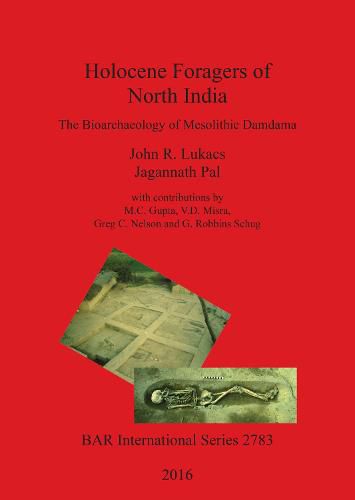Readings Newsletter
Become a Readings Member to make your shopping experience even easier.
Sign in or sign up for free!
You’re not far away from qualifying for FREE standard shipping within Australia
You’ve qualified for FREE standard shipping within Australia
The cart is loading…






This title is printed to order. This book may have been self-published. If so, we cannot guarantee the quality of the content. In the main most books will have gone through the editing process however some may not. We therefore suggest that you be aware of this before ordering this book. If in doubt check either the author or publisher’s details as we are unable to accept any returns unless they are faulty. Please contact us if you have any questions.
A fresh and innovative approach to the skeletal biology of prehistoric South Asians is presented in this volume. It is the first comprehensive bioarchaeological study of an early Holocene human skeletal series from the Gangetic Plain of North India. New methods and techniques reveal insightful perspectives on the biological adaptations and affinities of the aceramic foragers from Mesolithic Damdama (ca. 8800 BP). Attention is given to archaeological context and to the geological and ecological setting in which these semi-nomadic, microlithic hunters lived and foraged. The integrative analysis of skeletal preservation includes documenting bone micro-structure and chemical composition, and a taphonomic approach to skeletal representation. Diverse methods of age and sex determination provide a firm basis for paleo-demographic analysis. Multivariate statistics refine the precision of: sex determination, stature estimation, and calculation of bio-distance from cranial and dental attributes. The large skeletal sample facilitates both statistical assessment of traits by sex within the Damdama series, and inter-site comparison of traits with nearby Mesolithic series and with key prehistoric samples from India and Pakistan. Prevalence of pathological lesions provides evidence of health and nutrition, while skeletal markers of activity yield insight into patterns of habitual behavior. These new data from Mesolithic Damdama contribute significantly to theoretical issues in anthropology, including health and subsistence, skeletal robusticity, and biological adaptation to a subtropical riparian environment.
$9.00 standard shipping within Australia
FREE standard shipping within Australia for orders over $100.00
Express & International shipping calculated at checkout
This title is printed to order. This book may have been self-published. If so, we cannot guarantee the quality of the content. In the main most books will have gone through the editing process however some may not. We therefore suggest that you be aware of this before ordering this book. If in doubt check either the author or publisher’s details as we are unable to accept any returns unless they are faulty. Please contact us if you have any questions.
A fresh and innovative approach to the skeletal biology of prehistoric South Asians is presented in this volume. It is the first comprehensive bioarchaeological study of an early Holocene human skeletal series from the Gangetic Plain of North India. New methods and techniques reveal insightful perspectives on the biological adaptations and affinities of the aceramic foragers from Mesolithic Damdama (ca. 8800 BP). Attention is given to archaeological context and to the geological and ecological setting in which these semi-nomadic, microlithic hunters lived and foraged. The integrative analysis of skeletal preservation includes documenting bone micro-structure and chemical composition, and a taphonomic approach to skeletal representation. Diverse methods of age and sex determination provide a firm basis for paleo-demographic analysis. Multivariate statistics refine the precision of: sex determination, stature estimation, and calculation of bio-distance from cranial and dental attributes. The large skeletal sample facilitates both statistical assessment of traits by sex within the Damdama series, and inter-site comparison of traits with nearby Mesolithic series and with key prehistoric samples from India and Pakistan. Prevalence of pathological lesions provides evidence of health and nutrition, while skeletal markers of activity yield insight into patterns of habitual behavior. These new data from Mesolithic Damdama contribute significantly to theoretical issues in anthropology, including health and subsistence, skeletal robusticity, and biological adaptation to a subtropical riparian environment.